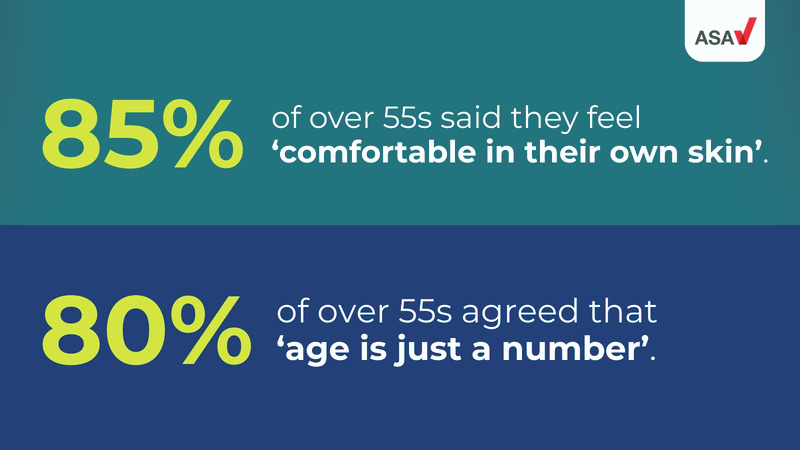How old is "old"? In 2025, the answer to that question is not black and white. With people working later in life and staying active for longer, age now seems to be more about mindset, health and the way we see ourselves, rather than the number of candles on a birthday cake.
And yet you might not know that from the ads we see and hear. New research from the organisation I lead, the Advertising Standards Authority, reveals a disconnect between how older people experience their lives, and how they’re shown in the media, especially in ads. We spoke to over 4,000 people across the UK and what we heard was remarkably consistent: they want ads to depict the reality of what it looks like to grow older these days.
The public told us that all too often, ads reduce older people to tired caricatures: the silver-haired technophobe, the grumpy old man, the lonely, vulnerable pensioner. Some of these portrayals are potentially offensive, others just irritating - but collectively, they send a message that growing older isn’t something to be celebrated.
At the same time, there’s growing frustration with how older audiences are targeted. Many people spoke of feeling bombarded by ads for will writing, stairlifts and cremation services, regardless of their actual lifestyle. Instead of recognising the many older people who are active, vibrant and diverse, an over-abundance of such ads presumes decline, reducing later life to a marketing category defined solely by dependency and endings.
Of course, we recognise that ads are often constrained by time and space, and that generalisations can be a valuable tool for getting messages across quickly. And there’s no question that products and services aimed at older people have every right to be advertised. But our research shows that it’s the tone and delivery - not necessarily the subject matter - that’s sometimes missing the mark, leaving the very audiences advertisers are trying to reach feeling misunderstood or misrepresented.
What we heard from older people was clear: they want to be portrayed as they really are. Too often, ads swing to the extremes, showing either the frail pensioner or the skydiving 80-year-old. Most people’s lives fall somewhere in between. They want ads better to reflect that, showing the full spectrum of later life: people who are active, working, caring for others, embracing new opportunities, and living with confidence and purpose. Not idealised, not sidelined, just seen.

I turned fifty a few years ago and, like many others, too often I don’t recognise myself in the sometimes bleak, at times patronising portrayals of ageing we see in ads. The truth is far more optimistic: our research found that people aged fifty-five and over are actually more likely than younger groups to say they feel comfortable in their own skin - and more likely to believe that age really is just a number.
The reality is that ‘over fifty-five’ isn’t a single life stage - it covers a broad span of ages, experiences and lifestyles, which is why our research was designed to capture perspectives from across the demographic spectrum. Some older people might be writing wills or booking retirement cruises, yes - but many are still building careers, caring for family, staying active and embracing new passions.
And there’s a prize to be won for advertisers who get this right. The International Longevity Centre estimates that by 2040, 63% of all consumer spending in the UK will be by those aged 50 and over. Far from winding down, this age group is spending on travel, tech, home improvements and more. This is a high value, growing audience and brands that reflect their lives with authenticity stand to gain their attention, trust and loyalty.
This is not a call for censorship, diversity quotas or new rules. As a regulator, we’re committed to protecting people from irresponsible ads, but we also love creativity, story-telling and want responsible advertising to flourish.
What we’re offering is insight: a reflection of what the public is seeing and hearing and how it’s landing. Because ultimately, how we portray ageing matters. It shapes how we treat one another, how we see ourselves and what we expect from life as we age.
And it’s worth saying that people aren’t asking for perfection. They’re asking for more realism. They want to see older people portrayed with the same variety and nuance as anyone else - lives that are full, complex, and evolving.
Britain is getting older. But we’re also staying younger in spirit, in outlook and in ambition. It’s time for a conversation about whether today’s advertising reflects that.
This article first appeared in The Drum on 19 June 2025.
-
Keep up to date
Sign up to our rulings, newsletters and emargoed access for Press. Subscribe now.
Guy became Chief Executive of the ASA, the UK regulator of ads in all media, in 2009. Responsible for executing the ASA’s strategy to make UK ads responsible, he oversees all functions of the ASA system. Read more


